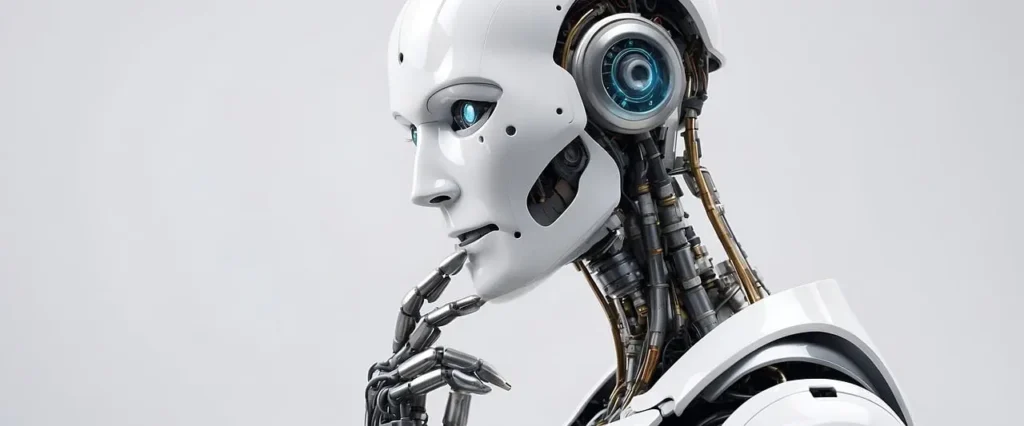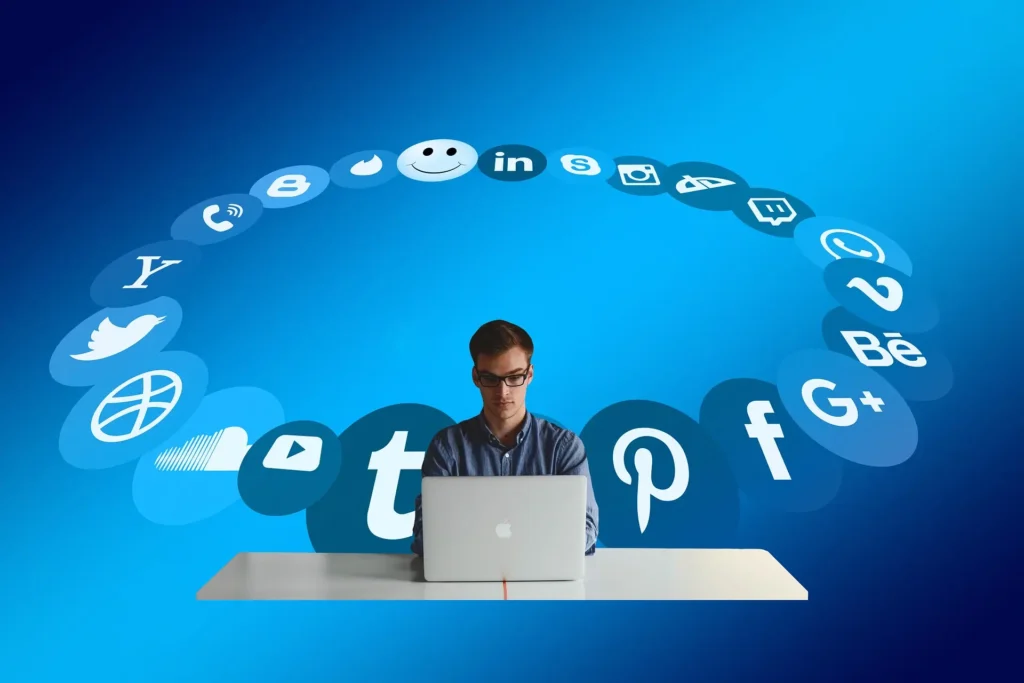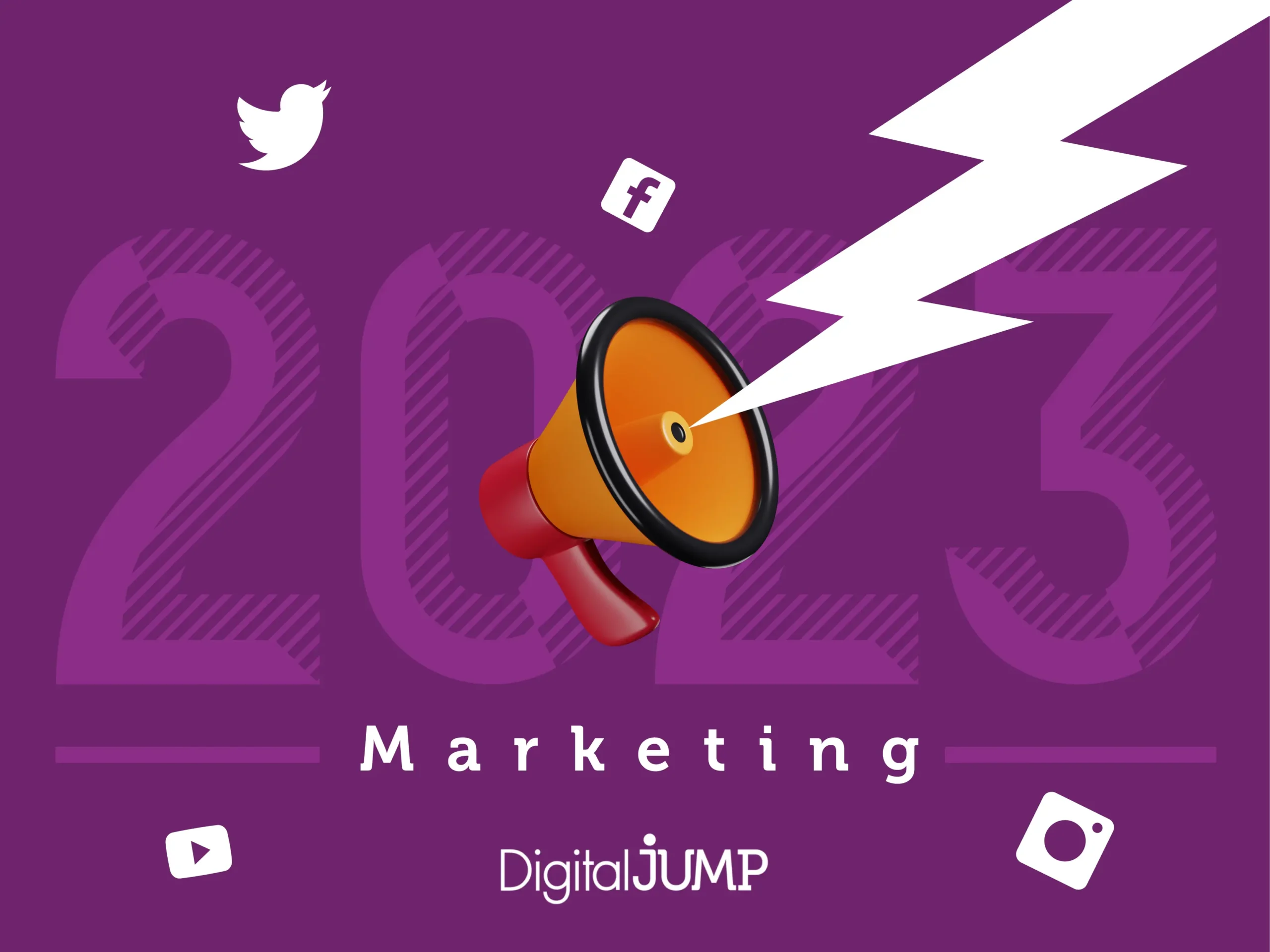Writing this note gives chills, are we seriously already closing the year? Wow.
Having said that, let’s get to the point: we will try to review what 2023 left in relation to Digital Marketing. We will review the most important topics and the news that marked this year’s agenda.
Spoiler alert: The next note will be about the trends and predictions for 2024, so if you have not subscribed to our newsletter, do so here so you don’t miss it and start the year well oriented.

AI – Artificial Intelligence:
Without a doubt one of the topics of the year. There are those who say that the marketing teams of the future will not be marketing teams but artificial intelligence teams. The idea that automated systems that learn on their own can completely replace the human being is controversial, but it is undeniable that many tasks are going to be (are being, were) transferred to robots and computers.
Digital Marketing, as an industry born digitally, experiences this phenomenon without brakes. The creation of options for texts, voices, images, animations and the evolution of these elements through the introduction of human perceptions or results, is already a fact, even in free solutions.
We show you some of the most popular tools for content generation, although there are thousands:
- Chat GPT: Able to perform various natural language processing tasks, such as answering questions, completing sentences, translating languages, and generating coherent text.
- Copy.ai: Content generation platform that helps users create high-quality content in a short time.
- DeepL: Platform dedicated to content translation.
- Mid Journey: Tool capable of creating images and designs based on textual descriptions.
- Canva: Online design tool now with special AI features.
- Dall-E-2: Image design platform based on textual descriptions.
Another set of solutions that use AI focus on the processing of data from advertising actions and the parameterization of campaigns, in an automated manner, as well as the reporting of the results. In this group of solutions, traditional digital marketing service provider companies take the lead by incorporating AI into their tools. We could mention for example:
- SemRush: Digital marketing strategy optimization and monitoring solutions.
- Hubspot: Digital marketing strategy optimization solutions.
- Ad Grader: Tool to improve the performance of Google Ads campaigns.
- Ubersuggest: Tool for managing SEO strategies.
The application of AI is not restricted to these two large groups (Content and Advertising Management) but extends to the entire universe of digital marketing tasks. It is still difficult to identify winning solutions, and many companies are still unable to incorporate use into their dynamics. If you are in that place, do not despair, simply act: learn, try and incorporate everything that can and works.

2. Retail Media
Long story, in a short story to understand how we got there and what it is: Historically, investment in advertising was allocated to offline media, newspapers, radio, TV, magazines, posters, etc. One day Google and Facebook (now Meta) appeared and began to take a large part of that juicy package. With enormous amounts of traffic, and a lot of user data, they sold spaces to companies to promote their products.
But it seems that things are beginning to change, at least some of them. It turns out that the regulations of the most developed world (Europe and the USA), where the most attractive markets are, are beginning to limit the collection and use of user data for commercial purposes, to advertising platforms such as Google and Meta. At the same time, large commercial chains (retail) consolidate enormous spaces of their own where they receive gigantic amounts of traffic that make purchases daily (Wal-Mart for example) and therefore collect (with the consent of users) enormous amounts of data, very useful for marketing products.
Retail Media then emerges, subdivisions of large retail companies (Cencosud in Argentina for example), which are dedicated to marketing their own digital channels to the brands of the products they offer there. These initiatives, which emerged almost as experiments, are now huge divisions with their own teams, and project incredible growth rates, competing with the business of these chains themselves (selling products, not advertising) and threatening the large advertising platforms (Meta and Google).
Although this communication channel is still incipient and its use is concentrated in large brands, it is expected that it will become popular and gain importance in the near future.

3. GA4 – Google Analytics 4
Goodbye to Google Universal Analytics, hello to Google Analytics 4. Par excellence, the most used tool to measure traffic on websites and applications finally implemented its replacement in the middle of this year with a new version: GA4.
This time it was a much riskier transition than previous evolutions that implied in many cases (poorly attended to) the complete loss of data, when the previous version stopped working.
In addition to this, the GA4 structure forced users to understand a new analysis structure, now based on data and no longer on cookies, and to incorporate into its dynamics an in principle more powerful solution, although with important points of friction at least in its initial adoption.

4. Metaverso
Concept with a few years of prominence in the industry (In 2021 Facebook was renamed Meta to cite a reference) although in 2023 it is somewhat dormant. The existence of virtual worlds experienced by real human beings is undeniable and advertising dedicates a good part of its budget to these environments, as well as to the creation of better contact tools with the target audience.

5. eSports
For some time now, many sports have received more advertising in their virtual version than in their original version, for example some car racing leagues. Accompanying this movement is the emergence and consolidation of sports with a 100% digital heart, eGames, Poker, etc. Already available spaces for the positioning of brands and products and at this point, quite well used.

6. Influencers
The recommendation industry is undergoing an evolution. The notion of super-well-known people recommending anything and getting traction is starting to lose steam (except for megastars) and the idea of topic-specific referents with segmented audiences for similar sets of products is starting to gain ground. The multiplication of players and content punishes the scope and makes the industry increasingly competitive. Brands continue to trust in the option although the context of opportunities of a few years ago is far away.

7. Own Streaming/Podcast
More and more brands and products are forced (and attracted) to generate their own content and use their own channels. Sometimes alone, sometimes in collaboration with established audience holders, they launch YouTube channels, podcasts, Twitch channels, etc. The impact via advertising is increasingly costly and less efficient. Whoever manages to consolidate a unique and relevant message and build their own audiences sooner or later monetizes and achieves results.

8. Automation and “audiovisualization” of content
In line with the adoption of AI, although not necessarily dependent on this technology, marketing teams tend to automate both the creation and publication of much of their content.
Aside from this, the preponderance of real video content is gradually making texts and static plaques almost obsolete, in line with the better response rates they generate.
Conclusion
This is our summary. We die with these 8 points. Surely more things happened and some were important, but this is our selection. This was for us what you need to know about 2023 in digital marketing if you missed the year.
Now to start 2024 we suggest that you don’t miss anything. Send this note, wait for the next one and if you haven’t, subscribe here to receive it.
Did we miss something? Tell us!
Did you like the note? Share it!
As always, thanks for reading. We are.


